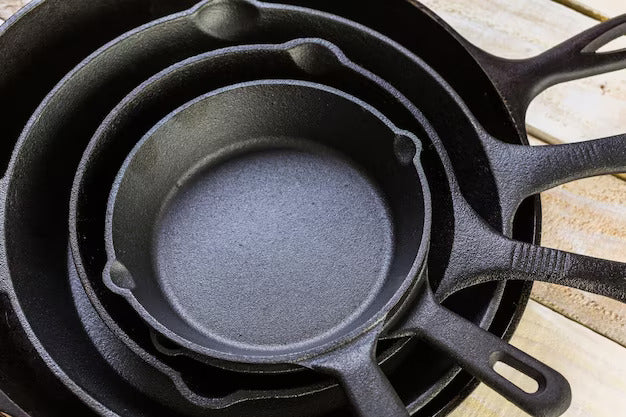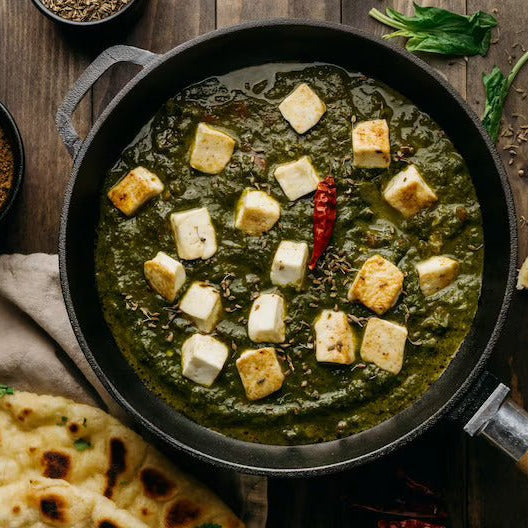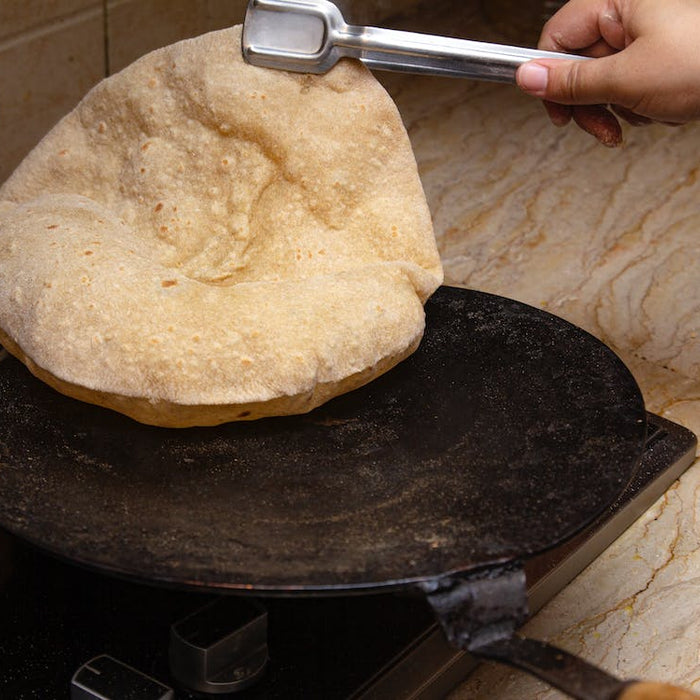
How to Cook on Cast Iron - Exploring Health Benefits, Uses, and Important Facts
Art of Cooking on Cast Iron
Cooking on cast iron is more than just a culinary technique—it's an art form that has been passed down through generations. Cast iron cookware, with its unparalleled heat retention and even distribution, has long been revered by chefs and home cooks alike for its ability to create mouthwatering dishes with exceptional flavor and texture. In this introduction, we'll explore the fundamentals of cooking on cast iron, from seasoning and preheating to mastering the perfect sear and caring for your treasured cookware.
Seasoning Your Cast Iron:
One of the essential steps in cooking on cast iron is seasoning, a process that involves applying a layer of oil to the surface of the cookware to create a natural, non-stick coating. Seasoning not only prevents food from sticking but also helps protect the cast iron from rust and corrosion. With each use, the seasoning layer builds up, enhancing the cookware's performance over time.
Preheating for Success:
Proper preheating is key to achieving optimal results when cooking on cast iron. Unlike other types of cookware, cast iron requires preheating at a moderate temperature to ensure even heat distribution. This step is crucial for achieving a perfect sear on meats and vegetables and ensuring that your food cooks evenly from edge to edge.
Mastering the Perfect Sear:
One of the hallmarks of cooking on cast iron is the ability to achieve a flawless sear on meats and other ingredients. To achieve that coveted caramelization and depth of flavor, it's essential to preheat your cast iron skillet or grill pan until it's hot enough to create a sizzling surface. Then, gently place your ingredients onto the hot surface, allowing them to cook undisturbed until a golden crust forms.
Caring for Your Cast Iron:
Proper care and maintenance are essential for preserving the longevity of your cast iron cookware. After each use, it's crucial to clean your cast iron with hot water and a stiff brush, avoiding harsh detergents that can strip away the seasoning. Once clean, be sure to thoroughly dry your cookware to prevent rusting, and store it in a cool, dry place.
Exploring Health Benefits, Uses, and Important Facts
Cast iron cookware has long been cherished for its durability, versatility, and even heat distribution. From searing steaks to baking cornbread, these trusty kitchen companions have stood the test of time. In this blog, we'll delve into the incredible health benefits of cast iron cookware, its various uses, and essential facts to know about its maintenance and use.
The Health Benefits of Cooking with Cast Iron:
-
Nutritional Boost: Cooking with cast iron can add a small amount of iron to your food, particularly when cooking acidic foods like tomatoes.
-
Chemical-Free Cooking: Unlike some non-stick cookware that can release harmful chemicals when heated, cast iron is free from synthetic coatings, making it a safer option for cooking.
-
Improved Iron Levels: Regular use of cast iron cookware has been linked to potential improvements in iron levels, especially beneficial for individuals with iron deficiency or anemia.
-
Longevity: Cast iron cookware is built to last a lifetime and beyond, reducing the need for frequently replacing kitchen equipment and minimizing waste.
-
Versatility: From stovetop to oven, cast iron cookware can seamlessly transition between cooking methods, making it ideal for a wide range of recipes.
Important Uses of Cast Iron Cookware:
-
Frying and Searing: Cast iron skillets excel at frying and searing, creating a perfectly crisp exterior while locking in moisture and flavor.
-
Baking: Whether it's cornbread, cobblers, or even pizza, cast iron pans distribute heat evenly, resulting in evenly baked goods with a golden crust.
-
Grilling: Grill pans with raised ridges mimic the effects of outdoor grilling, creating beautiful sear marks on meats and vegetables.
-
Slow Cooking: Deep kadais and Dutch ovens are perfect for slow cooking stews, soups, and braises, ensuring tender, flavorful results every time.
Important Facts to Remember:
-
Seasoning: Cast iron cookware requires seasoning to develop a non-stick surface and prevent rusting. Regular seasoning and proper care will prolong the life of your cookware.
-
Cleaning: Avoid using harsh detergents or scrubbing pads on cast iron. Instead, use hot water and a stiff brush to clean, and always dry thoroughly to prevent rust.
-
Avoid Acidic Foods: Acidic foods like tomatoes or citrus can strip away the seasoning of cast iron, so it's best to avoid prolonged cooking of such foods.
-
Preheating: Preheat your cast iron cookware gradually to prevent thermal shock, which can lead to warping or cracking.
In conclusion, cast iron cookware offers a myriad of health benefits, from nutritional enhancements to chemical-free cooking. Its versatility and durability make it an essential tool in any kitchen, capable of producing delicious meals for generations to come. By understanding its uses and following proper care and maintenance, you can unlock the full potential of cast iron cookware in your culinary endeavors.
Featured collection
-
Original price - Original priceOriginal price Rs. 19.99Rs. 19.99-Current price Rs. 19.99
Product title
Original price - Original priceOriginal price Rs. 19.99Rs. 19.99-Current price Rs. 19.99 -
Original price - Original priceOriginal price Rs. 19.99Rs. 19.99-Current price Rs. 19.99
Product title
Original price - Original priceOriginal price Rs. 19.99Rs. 19.99-Current price Rs. 19.99 -
Original price - Original priceOriginal price Rs. 19.99Rs. 19.99-Current price Rs. 19.99
Product title
Original price - Original priceOriginal price Rs. 19.99Rs. 19.99-Current price Rs. 19.99 -
Original price - Original priceOriginal price Rs. 19.99Rs. 19.99-Current price Rs. 19.99
Product title
Original price - Original priceOriginal price Rs. 19.99Rs. 19.99-Current price Rs. 19.99 -
Original price - Original priceOriginal price Rs. 19.99Rs. 19.99-Current price Rs. 19.99
Product title
Original price - Original priceOriginal price Rs. 19.99Rs. 19.99-Current price Rs. 19.99
Blog posts
-
-

What is Karahi or Kadahi? Exploring Its Best Use in 2024 | Non Stick
The kadai or karahi holds a special place, when it comes to Indian cooking,choose MACclite kadai cookware for a healthier and more enjoyable cooking experience.Read now -

Best Tawa for Roti 2024 - Guide to Choosing the Best Iron Tawa for Your Family
The roti tawa is the right tool to achieve the ideal texture and taste. Finding the perfect roti tawa for your family can be both rewarding and challenging in 2024 due to the many options available.Read now


